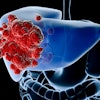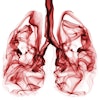When emergency physicians are empowered to make pragmatic clinical decisions about children with symptoms of appendicitis, they may be inclined to avoid ordering CT exams as a component of the diagnostic workup.
This culture exists at Stanford University's Lucile Packard Children's Hospital in Palo Alto, CA, where the findings of ultrasound exams, laboratory tests, clinical histories, and physical examinations are heavily utilized, and CT exams are conservatively ordered.
A study evaluating a sample of patients with appendicitis symptoms admitted to Lucile Packard Children's Hospital's emergency department at night and on weekends over a six-year period showed that ordering CT exams can be avoided for the majority of children without making misdiagnoses. The study's findings were published in the November issue of Academic Emergency Medicine (2009, Vol. 16:11, pp. 1258-1265).
In 2003, the hospital's emergency, radiology, and surgery departments developed protocols that adopted the as-low-as-reasonably-achievable (ALARA) principles to reduce unnecessary radiation exposure to children with abdominal pain. Ultrasound would be used as the primary imaging test, even at night (6 p.m. to 6 a.m.) and on weekends when experienced pediatric sonographers were not available. Based on their own assessment, emergency physicians could recommend immediate surgery or discharge patients without a confirming CT exam.
An analysis of 680 representative patients admitted after hours and on weekends between January 2003 and December 2008 revealed that CT exams were ordered for only 37% of these children. CT exams were ordered for 17% of the children with positive ultrasound findings, 48% with equivocal findings, and 20% with negative findings.
Out of the 94 patients who were discharged after having a negative ultrasound exam, only one patient was misdiagnosed, returning with a perforated appendix.
Five of the 106 patients, or 5%, with positive ultrasounds who had surgery without a confirming CT exam had a negative appendectomy.
Ten of the 435 patients with equivocal ultrasound had an appendectomy based on clinical signs without having a CT scan. One of these patients had a negative appendectomy.
In all, 120 of the 228 patients for whom CT scans were not ordered after an equivocal ultrasound improved clinically in the emergency department and were discharged. Another 98 were diagnosed with urinary tract infection, constipation, viral gastroenteritis, and mesenteric adenitis.
CT exams were ordered for 45 patients (22 positive US, 23 negative US). In 41 cases, or 91%, the CT findings corroborated the ultrasound findings and did not change clinical management.
Overall, the prevalence of appendicitis was 24%.
Related Reading
Ultrasound good test for pediatric intussusception, October 16, 2009
CT coronal reconstructions aid pediatric appendicitis diagnosis, January 12, 2009
Sonography should be first imaging study for suspected appendicitis, May 23, 2008
CT use cuts false positives for appendicitis, March 19, 2008
Ultrasound differentiates causes of abdominal pain in kids, October 4, 2002
Copyright © 2009 AuntMinnie.com



















